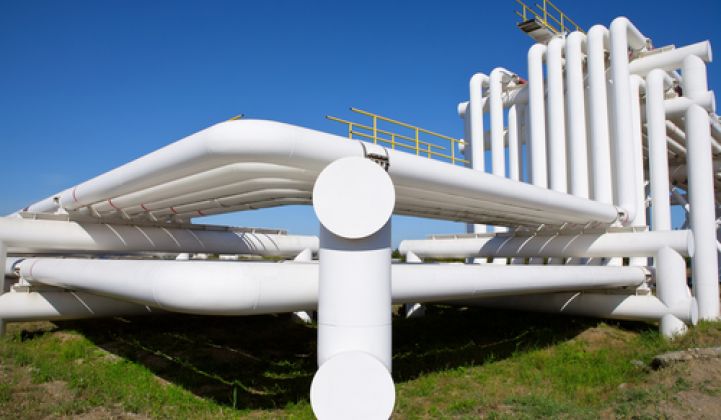Australia’s top gas distribution network operator, Australian Gas Infrastructure Group, plans to mix hydrogen into its supplies to take advantage of excess renewable generation.
In February, the company announced plans for an AUD $11.4 million (USD $8.9 million) hydrogen power-to-gas demonstration plant, to be built in Adelaide, South Australia.
The hydrogen produced by the plant will be injected into the local gas distribution network at the Tonsley Innovation District, south of Adelaide, to provide low-carbon gas to homes and businesses, Australian Gas Infrastructure Group said.
“The project is expected to be the first in Australia where renewable electricity is stored and distributed in the gas network as hydrogen, providing an additional market for fluctuating renewable electricity,” stated AGIG chief customer officer Andrew Staniford in a press note.
The park is being partly financed with AUD $4.9 million (USD $3.8 million) from South Australia’s AUD $150 million (USD $117 million) Renewable Technology Fund. AGIG will be providing a further AUD $5 million (USD $3.9 million).
The plant will feature one of the largest polymer electrolyte membrane electrolysis machines ever installed in Australia, a 1.25-megawatt system from Siemens, and is scheduled to start producing hydrogen by 2020.
Andrew Dillon, CEO of industry body Energy Networks Australia, told GTM the sector is looking at the impact of adding up to 15 percent hydrogen to natural-gas supplies, as a precursor to moving to higher levels over time.
Already, he said, “places like South Australia are in a situation where with current renewable energy generation there will be serious issues with wind farms and solar producing electricity with nowhere to go.”
One report from last September put wind curtailment in South Australia at more than 6 percent. Using that lost energy to create more electricity, from hydrogen, is an obvious move. It is not without complexities, however.
To begin with, Dillon said gas suppliers would have to find out what level of hydrogen could be accommodated without having to make significant changes to the infrastructure or to gas-burning appliances.
Australia’s gas companies are in a fortunate position, he said, because they have replaced most of their steel pipes, which would be subject to embrittlement if used to transport hydrogen.
On the other hand, Dillon said, adding hydrogen is expected to increase the cost of gas supplies because “it’s a developing technology at this point.”
At this stage, “increasing bills isn’t a worry because it’s a trial,” he commented. However, “this is one of the key challenges” in the hydrogen development plans, he said. “One of the aims of the project would not just be, ‘Can it work?’ but ‘Can it work cheaply?’”
Australia seems determined to give it a try, at least. In addition to the Tonsley project, South Australia has announced plans for an even bigger plant at Port Lincoln, Eyre Peninsula.
The AUD $117.5 million (USD $91.5 million) Port Lincoln facility is also benefiting from government financing.
It will feature a 15-megawatt electrolysis system, a 10-megawatt hydrogen-fueled turbine, a 5-megawatt fuel cell and an ammonia production setup, according to the Australian Broadcasting Corporation.
The project is being developed by a company called Hydrogen Utility, working with Thyssenkrupp, the German steel-to-shipbuilding conglomerate. The timing of the plant has not been publicized.
The only other significant hydrogen project unveiled to date in Australia was an AUD $55 million (USD $43 million), 1.25-megawatt electrolyzer plant for Australian Capital Territory, announced in 2016.
Last year, Siemens lent its support to a hydrogen roadmap developed by Advisian, part of the WorleyParsons Group.
With rising levels of peak renewable energy production having nowhere to go, Australia now sees hydrogen as a resource that could help solve grid problems and potentially lead to an important export business.
“If you are currently running a gas distribution network, for a while you have a prosperous future,” he said. “But with current technology, your future is constrained. Therefore, hydrogen is of interest.”




